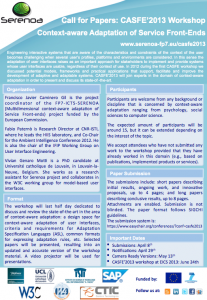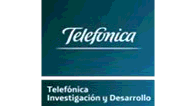Serenoa partners from W3C and UCL have attended the 22nd International Conference on World Wide Web that took place in Rio de Janeiro, Brazil from May 13th to 17th. Dave Raggett and Vivian Motti presented on May 17th during the developers track, the work on Quill: a Collaborative Design Assistant for Cross Platform Web Application User Interfaces.
The paper can be retrieved online at: http://www2013.org/companion/p3.pdf
The slides are also publicly available.
The event involved more than 1000 participants from 46 countries. Adaptation and context-awareness have been extensively covered this year during different tracks, workshops and presentations. The next WWW conference, in 2014, will take place in Seoul, Korea.
This week from May 8th to 10th, the Serenoa project will be presented during the 2013 Future Internet Assembly event. This event will be held in Dublin, Ireland on 8th to 10th May, in association with the Irish presidency of the Council of the EU.
The European Commission, in collaboration with EU Presidencies has, since 2008, hosted regular Future Internet Assembly events (FIA, http://www.future-internet.eu). FIA is a research community driven initiative supported by more than 150 research projects that have recognised the need to strengthen European activities on the Future Internet (FI) to main
tain European competitiveness in the global marketplace. In particular, these projects have identified the urgent need to redesign significant part of the Internet, taking a broad multidisciplinary approach, to meet European societal, business and technology ambitions.
Participants are members of the FI community, who include the national and EU project coordinators and partners of FP7 funded projects both academic and industry researchers.
Thanks to the collaboration of all the Serenoa partners, the fifth newsletter of the project has just been concluded and released. It can be accessed online.
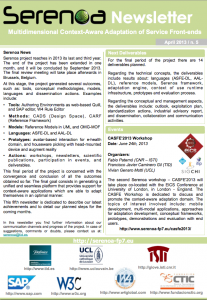 This newsletter, as part of the dissemination actions of the Serenoa project, aims at reporting its last achievements and its following steps. It summarizes part of the results obtained during the last period, and presents some of the recent publications produced. Moreover, this newsletter also describes the events that the partners participated or are organizing for the coming months of the project.
This newsletter, as part of the dissemination actions of the Serenoa project, aims at reporting its last achievements and its following steps. It summarizes part of the results obtained during the last period, and presents some of the recent publications produced. Moreover, this newsletter also describes the events that the partners participated or are organizing for the coming months of the project.
The 2nd Serenoa workshop, CASFE'2013, will take place on June 24th, co-located with EICS'2013 (5th ACM SIGCHI Symposium on Engineering Interactive Computing Systems).
The deadline for submission of papers has been extended. It is due to April 29th. We invite all the community investigating context-aware adaptation and related topics to submit their works. Further information can be found in CASFE'2013 website at: http://www.serenoa-fp7.eu/casfe2013/
Engineering interactive systems that are aware
write my homeworkof the characteristics and constraints of the context of the user becomes challenging when several user’s profiles, platforms and environments are considered. In this sense the adaptation of user interfaces raises as an important approach for stakeholders aiming at implementing and providing systems whose user interfaces are usable, regardless of their context of use. In 2012 during the first CASFE workshop we discussed potential models, frameworks and practical applications that aim at supporting, facilitating and improving the development of adaptive and adaptable systems. CASFE’2013 aims at joining experts in the domain of context-aware adaptation in order to present and discuss its state-of -the-art.
On April 9th and 10th, Serenoa partners will meet in SAP venues (Darmstadt – Germany) to synchronize their current works and latest achievements of the Serenoa project. Participants from TID, UCL, ISTI, SAP, W4 and CTIC will discuss the ongoing work on the different work p
ackages and their respective tasks and also plan the next activities for the coming months.
After this meeting, the next face-to-face meeting will probably take place in London, co-located with EICS'2013, CASFE'2013 and the Industrial Advisory Board Meeting.
The Proceedings of CASFE'2012 is now available online. The 10 papers presented at the workshop can be accessed and downloaded at http://ceur-ws.org/Vol-970/
CASFE'2012 took place on November 13th, 2012 co-located with AmI conference, in Pisa – Italy.
CASFE'2013 Workshop (Context-aware Adaptation of Service Front-Ends) will take place on June 24, 2013 in London, UK (co-located with EICS 2013)
The call for papers for CASFE'2013 is now open.
Important Dates:
Submissions deadline: April 29, 2013 (extended)
Notifications of acceptance: May 6, 2013
Camera Ready Versions: May 13, 2013
Description
Engineering interactive systems that are aware of the characteristics and constraints of the context of the user becomes challenging when several user's profiles, platforms and environments are considered. In this sense the adaptation of user interfaces raises as an important approach for stakeholders to implement and provide systems whose user interfaces are usable, regardless of their context of use. In 2012 during the first CASFE workshop we discussed potential models, frameworks and practical applications that support, facilitate and improve the development of adaptive and adaptable systems. CASFE'2013 will join experts in the domain of context-aware adaptation in order to present and discuss its state-of-the-art.
Participants
Participants ar
e welcome from any background or discipline that is concerned by context-aware adaptation ranging from psychology, social sciences to computer science. The expected amount of participants will be around 15, but it can be extended depending on the interest of the topic. We accept attendees who have not submitted any work to the workshop provided that they have already worked in this domain (e.g., based on publications, implemented products or services).
Format
The workshop will last half day dedicated to discuss and review the state-of-the-art in the area of context-aware adaptation: a design space for context-aware adaptation of user interfaces, criteria and requirements for Adaptation Specification Languages (ASL), common formats for expressing adaptation rules, etc. Selected papers will be presented, resulting into an updated and accurate version of the workshop material. A video projector will be used for presentations.
Paper Submission
The submissions include: short papers describing initial results, ongoing work, and innovative proposals, up to 4 pages; and long papers describing conclusive results, up to 8 pages. Attachments are enabled. Submission is not blinded. The paper format follows SIGCHI guidelines.
The submission system is available at: https://www.easychair.org/conferences/?conf=casfe2013
The Mobile World Congress 2013 takes place in Barcelona – Spain, from 25th to 28th February. In this event 2 Serenoa partners, Telefónica and W3C, will be present as exhibitors, representing also the project.
During the four days of Mobile World Congress, the 2013 conference programme will highlight the impact of mobile on individuals and businesses – in developed and developing markets – across a range of industries. The congress aims at challenging and educating attendees, providing essential insights on the latest technological developments, market opportunities, next-generation services, and devices which are shaping mobile communications.
Further information about the event can be accessed online at: http://www.mobileworldcongress.com/
According to a report of CISCO recently published, the global mobile data traffic grew in 70 percent in 2012, besides this a significant growth is also expected for the next 5 years. CISCO identified the 10 major trends behind this growth of the mobile data traffic. We selected 5 of such trends that are closely connected with context-aware adaptation, summarized and briefly present them below:
- Device Diversification: although laptops generate most of the current traffic, smartphones and newer devices as tablets will also take a more significant proportion of the traffic in the near future. By 2017, CISCO estimates that there will be 8.6 billion handheld or personal mobile-ready devices and 1.7 billion machine-to-machine connections (e.g., GPS systems in cars, asset tracking systems in shipping and manufacturing sectors, or medical applications making patient records and health status more readily available). The proliferation of high-end handsets, tablets, and laptops on mobile networks is a major generator of traffic, because these devices offer the consumer content and applications not supported by previous generations of mobile devices.
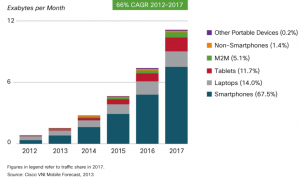
- Growth in Average Traffic per Device: as mobile network connection speeds increase, consequently the average bit rate of content accessed through the mobile network is also expected to increase. Moreover, the shift toward on-demand video will affect mobile networks as much as it will affect fixed networks, and finally because the usage of mobile devices increase an individual’s contact time with the network, it is likely that this increased contact time will lead to an increase in overall minutes of use per user.
-
Impact of 4G Connections on the Increase: The explosion of mobile applications and phenomenal adoption of mobile connectivity
losing weight
by the end users summed with the need for optimized bandwidth management and network monetization fuels the growth of Global 4G deployments and adoption. Service Providers, around the world, are busy rolling out 4G networks to help them meet the growing end-user demand for more bandwidth, higher security and faster connectivity on the move
- User Applications Driving Mobile Data Consumption: With the increasing number of smartphones and tablets connected through mobile networks, more attention is naturally turned to data consumption trends impacting both end-users and service providers. End-users become increasingly knowledgeable about how their usage patterns can be tailored for highest efficiency—while still using the applications they want to use, where and when they want to use them. Service providers look to data usage trends in order to ensure real-time network performance optimization.
- The (Mobile) Internet of Things: Cellular communication between objects, machines, or sensors has led to the growth of M2M connections. These connections are in the form of home and office security and automation, smart metering and utilities, maintenance, building automation, automotive, healthcare and consumer electronics etc.M2M technologies are being used across a broad spectrum of industries.
In conclusion, the mobile data services become a necessity for many network users. The mobile voice service is already considered a necessity by most users and the mobile data, video, and TV services will also become an essential part of consumers’ lives. Used extensively by consumer as well as enterprise segments, mobility has proven to be transformational. Mobile subscribers are growing rapidly and bandwidth demand due to data and video is increasing. The next 5 years are projected to provide mobile video adoption in many parts of the world. Backhaul capacity must increase so mobile broadband, data access, and video services can effectively support consumer usage trends and keep mobile infrastructure costs in check.
This report is based on the original article published by CISCO, which is publicly available online.
We are glad to announce that the second workshop of Serenoa, CASFE'2013 (Context-Aware Adaptation of Service Front-Ends) will be co-located with EICS'2013, the fifth ACM SIGCHI Symposium on Engineering Interactive Computing Systems. CASFE'2013 is dedicated to present and discuss the state-of-the-art of the domain of context-aware adaptation. It will takeplace in City University London, in London – UK in June 24th. Practitioners and researchers from different backgrounds with interest in adaptation are all invited to submit their papers. The deadline for submission is April 8th.
For further information about CASFE'2013 please access: http://www.serenoa-fp7.eu/casfe2013/
More details about the submission process will be published soon.
-
Twitter
- No public Twitter messages.
-
All about Serenoa
-
Funded by the European Commission
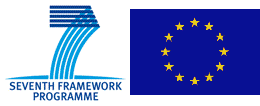
-
tags
Adaptation adaptive UI ambient intelligence Android Android SDK browser Brussels CASFE conference consortium context context-aware adaptation context-awareness CSS E-book Reader EICS elderly Events Facebook Fragments API framework HTML5 industrial panel iPad journal LREC MBUI Meeting Mobile Mobile Apps Model-driven models newsletter paper presentation review Review Meeting Serenoa standardization touch-based interaction TV UI W3C Working Group workshop


